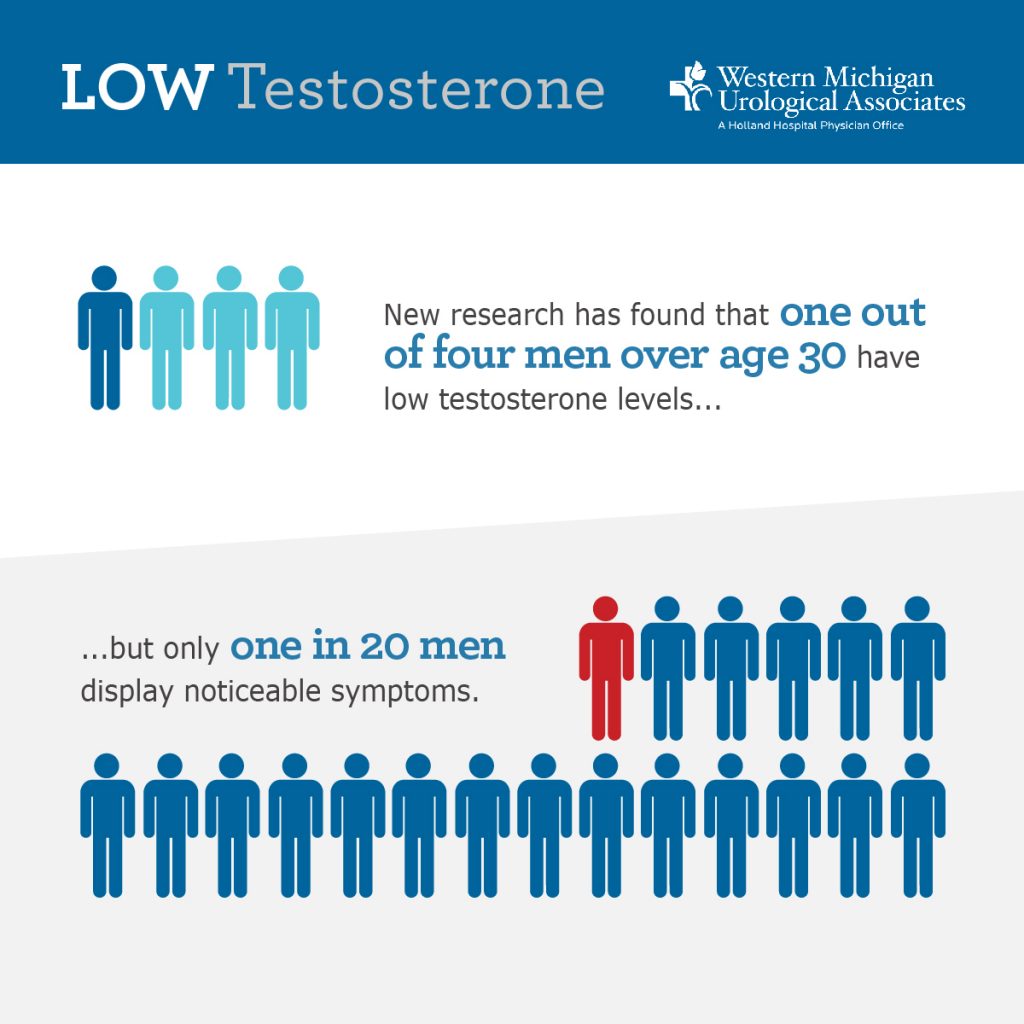If you’re a man over 30 you may find yourself with less stamina, lowered libido, and carrying a little extra weight. While some of these factors could easily be the result of lifestyle and age, there could be another, highly treatable reason for these changes.
Low Testosterone levels affect 1 in every 4 men over the age of 30 and affects 13 million men in the United States. How do you know if you have low testosterone and when is it time to ask your doctor? Keep reading to learn more about low testosterone, the symptoms, the treatment and how you can get feeling like yourself again!
What is Testosterone?
Testosterone is a naturally occurring hormone produced by the testes in males. It is the main sex hormone in men. Fertility and sex drive, mood, muscle mass, body fat distribution and red blood cell production are all influenced by testosterone.
If you are not producing enough testosterone you may experience increased weight, lowered sex drive, loss of muscle mass, mood swings and fatigue. Sexual dysfunction is among the highest reported symptom associated with low testosterone levels. Nearly 70% of men diagnosed with low testosterone report problems with erectile dysfunction and 63% report lowered sex drive.
It is important to note that many of the “classic” symptoms associated with low testosterone can often be related to lifestyle issues, age, and other factors. Also, 1 in 20 men with low testosterone, may not notice symptoms at all. So, it is important to discuss this with your healthcare provider if you suspect you may have issues with low testosterone.
Diagnosis
After speaking with your doctor about your symptoms, you and your doctor may decide to explore the possibility of low testosterone. Fortunately, this can be done with a simple blood test. Typically, testosterone results of 300ng/dl (that’s 300 nanograms per deciliter) is the threshold for a diagnosis of low testosterone. It is normal for testosterone production to slowly decrease with time after the age of 30. However, normal levels of testosterone can range from over 300ng/dl to as much as 1000 ng/dl depending on factors like age, medical history, and genetics.
Treatment
Treatment for low testosterone is simple and effective. Most of the time, treatments involve using hormone replacement therapy by either injection or medication. Only a doctor can tell you if replacement therapy is right for you and you can only get testosterone replacement by prescription.
Since testosterone has a large part in the healthy production of red blood cells, men who suffer from low testosterone generally have less energy and stamina when compared to those with normal levels. Chronic, untreated low testosterone can also lead to loss of muscle mass, decreased bone density, weight gain and may predispose men to issues like type 2 diabetes.
Low Testosterone and You
Low testosterone affects 13 million men in the United States, but it doesn’t have to be you! By staying informed, learning the facts and speaking with your healthcare provider, you can avoid being “One in Four.”


